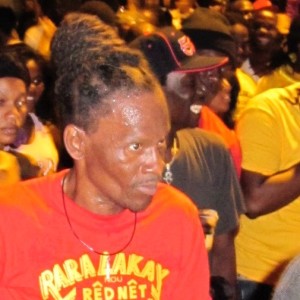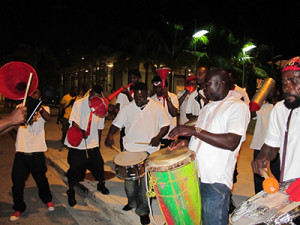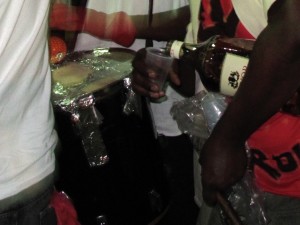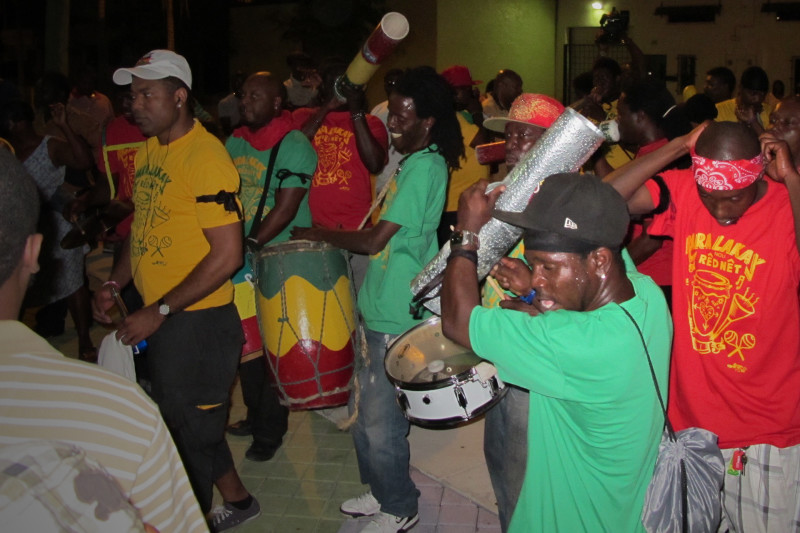The Little Haiti Cultural Center, City of Miami, and Miami-Dade County celebrated Haitian culture with Rara Fest on April 6, 2012. Rara is a form of Haitian festival music that is usually played during the Christian season of Lent, the 40 days leading up to Easter. But don’t think this is your usual church music. Rara is played with myriad instruments and is performed in a street procession. In Haiti, rara bands can play through the night, marching through neighborhoods and the countryside, welcoming all to join them.
This was to be my first rara, so I had no idea what to expect. As I pulled into the parking lot for the Little Haiti Cultural Center on Good Friday, I could hear the hymns coming from the Notre Dame d’Haiti Catholic Church across the street. It played in direct contrast to the fast rhythms blasting from the cultural center’s speakers. I learned that this dichotomy, this separation, is nothing new. At times, Haitian Christians tend to look down on rara. Some associate it only with Vodoun spirits and the lower classes.

“Everything that’s ours, we try to put a negative stereotype on it. … It was outsiders who made us see our culture as beautiful,” said Pe Yves, a founding member of DJA-Rara, the most prominent rara band in the United States. Pe Yves flew in from New York to take part in the festivities and introduce the documentary, “The Other Side of the Water,” which focuses on his band.
Pe Yves recounted how his parents used to spank him when he would leave the house to follow the rara processions. But the spankings never deterred him.
Although rara can be used in Vodoun ceremonies, that’s not the sum of its parts. “Rara has many branches,” Pe Yves said. “We take the folklore branch.”

He calls rara the “original music.” Developed long ago by Haitian slaves as a form of revolt, it is played with many different instruments. The most recognizable are the kone, a long horn made from recycled metal, and the vaksin, a long bamboo tube with a mouthpiece. Other instruments you’ll find in a rara procession are snare and tenor drums, African drums, cymbals, the graj (which looks like a long grater), cowbells, and even glass bottles and metal sticks.
This night’s procession took us through the streets of Little Haiti. After waiting for a police escort that never came, the bands took to the streets, directing traffic along the way. I was surprised to see how many different types of people were out there. There were families and teens; there was even an elderly woman who left the house in her muumuu to dance and sing.

“The music takes you away,” Pe Yves said. “That’s why you can start at one place and before you know it, you’re downtown.”
I’m sure the energy is helped along by clairin, a type of Haitian moonshine. The liquor was free flowing, with band members drinking before and during the procession.
Maybe I should’ve had some to take away the soreness that I was feeling in my feet. After about an hour of marching through the streets, I decided to call it quits. But I’m glad I held out for that long. I was able to enjoy a side of my culture that I had never experienced before.
Here’s an overview of the route:
![jessica alexandre [black girl | magic city] logo](https://www.jessicaalexandre.com/wp-content/uploads/2016/11/JA-BGMC-Logo-REV.jpg)
